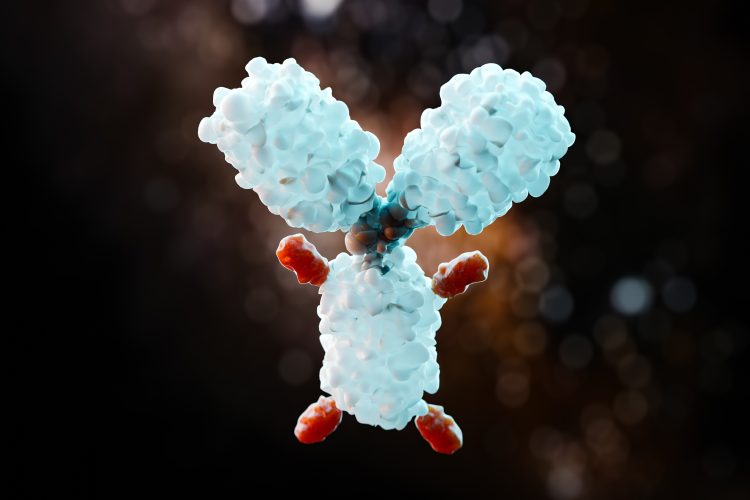Unlocking the potential of antibody drug conjugates
Posted: 1 May 2024 | Dr Jamie Rich (Zymeworks), Dr Paul Moore (Zymeworks), Dr Raffaele Colombo (Zymeworks) | No comments yet
Zymeworks’ Dr Paul Moore, Dr Raffaele Colombo and Dr Jamie Rich discuss how advancements in ADCs are redefining cancer treatment. They elucidate the innovative strategies that are being developed to improve drug stability and how personalised medicine approaches are optimising outcomes for individual cancer patients, offering new hope across several malignancies.


How have advancements in antibody-drug conjugates (ADCs) expanded treatment options for different types of cancer?
The design of ADCs has advanced considerably since initial efforts in the 1980’s, when using polyclonal antibodies and unoptimised payloads, linkers and conjugation strategies failed to provide patient benefit. The advent of monoclonal antibodies paired with improvements in each ADC design component has led to the approval of 11 ADCs with more than 180 ADCs currently in clinical development.
Notably, novel linker-payload technologies applied to the same target have provided significant improvements over previous generation ADCs. For example, T-DXd has dramatically improved patient responses beyond that achieved with T-DM1 (same anti-HER2 antibody, different drug-linker and drug-to-antibody ratio), doubling the response rate, extending progression-free survival (PFS) and overall survival (OS) of patients with metastatic breast cancer.
Furthermore, ADCs are demonstrating improved clinical efficacy when combined with other agents, in particular with immune checkpoint inhibitors, provided the combination has acceptable tolerability. For example, enfortumab vedotin in combination with anti-PD-1 pembrolizumab reshaped the first-line treatment of patients with previously untreated metastatic urothelial cancer, doubling OS compared to standard of care. But it has not always been easy: validated technologies applied across different antibodies and targets have not always showed benefits for patients, with >140 ADCs discontinued in the clinic to date.
What specific patient populations are benefiting the most from these developments?
To date, the 11 FDA-approved ADCs have shown benefit to patients across multiple solid and hematological malignancies with approvals in more than 20 indications. Patient populations benefiting from a particular ADC typically express the target of the ADC at a threshold level to support efficacy, although this can vary depending on the target and ADC design. Recently, T-DXd received the first tumour-agnostic accelerate ADC approval in patients with unresectable or metastatic HER2-positive solid tumours who have received prior systemic treatments and have no alternative options. In addition, ADCs are also moving to early lines of treatment and to curative setting. T-DM1, for example, is approved in patients with HER2-positive breast cancer and residual invasive cancer following neoadjuvant therapy.
What innovative strategies are being developed to improve drug stability?
Linker instability in circulation (also referred as premature payload released) is often cited as cause of ADC failure and root for ADC toxicities. Improvement in linker and conjugation technologies have provide tools to generate a spectrum of linker stabilities, from rapid release of payloads in circulation (half-life of <1 day) to perfectly stable linkers in circulation for several weeks. Intuitively, if the linker is not stable enough, the drug cannot be delivered by the antibody directly to tumour cells expressing the target. On the other hand, emerging clinical data suggest that overly stabilised linkers, especially for certain payload classes, are associated with unexpected toxicities in patients.
What role do targeted delivery systems play in enhancing the efficacy of ADCs, and how do they contribute to minimising off-target effects?
We are learning that we need to question the dogma behind ADCs and the accepted mechanisms of drug delivery to the tumour cell. Chemotherapy is acknowledged as not discriminating between tumour and healthy tissues. While tumour targeting can enhance drug concentration at the tumour site relative to chemotherapy, we must not forget that in general, less than 1 percent of the ADC reaches the tumour cell. To be cleared, the ADC that does not reach the tumour must be metabolised in healthy tissues.
At Zymeworks we apply a holistic approach to optimise each of the ADC components, leveraging insights gained from clinical trials and real-world clinical experience to inform the design of novel ADCs. This includes selection of the antibody, its affinity for the target, conjugation chemistry, DAR, type of linker (including linker stability), and the choice of payload. Within the payload, it is important to match the payload mechanism of action, potency, and its properties with the antibody target and indication. As mentioned, an analysis of ADCs that reached clinical development has demonstrated that high stability in the linker may not be the best goal to achieve the right balance between efficacy and toxicity. Similarly, ADCs with payloads that are too potent have been faced with unmanageable toxicities at sub-efficacious ADC doses.
What personalised medicine approaches are being explored to tailor treatment regimens and optimise outcomes for individual cancer patients?
Advances in next generation sequencing methods have resulted in the routine molecular fingerprinting of patient tumours in some countries. Knowledge of upregulation and downregulation of key genes, and mutations within cancer-associated proteins differentiate patients beyond indication and tumour histology. As we learn what therapies are more successful within specific patient populations, treatments can be tailored to increase the likelihood of being effective. For antibody drug conjugates, the discovery of molecular biomarkers for sensitivity to payload mechanism could advance our ability to predict the effectiveness of a drug, and as more ADCs become approved for a given indication, may enable the selection of the most appropriate ADC for a specific patient.
About the authors
Dr Paul Moore, Chief Scientific Officer at Zymeworks Inc.


Paul Moore, PhD, is Chief Scientific Officer at Zymeworks, Inc. He has more than 25 years of US-based experience in biologics drug discovery and development in biotechnology research. His career efforts have led to the discovery and development of a range of FDA-approved and clinical-stage biologics for patients with difficult-to-treat cancers and autoimmune conditions. Dr Moore received a PhD in molecular genetics from the University of Glasgow. He has an extensive research record co-authoring more than 75 peer-reviewed manuscripts and is a named co-inventor on over 50 issued US patents.
Dr Raffaele Colombo, Associate Director, Medicinal Chemistry at Zymeworks Inc.


Raffaele Colombo, PhD, is Associate Director, Medicinal Chemistry at Zymeworks Inc. He has more than 14 years of experience in studying the design and synthesis of new payloads and drug-linkers for antibodies, small molecules, and nanoparticles. He has a strong research background co-authoring 23 publications and is a named co-inventor on 10 patents. Dr Colombo received a PhD in organic and medicinal chemistry from Università degli Studi di Milano.
Dr Jamie Rich, Senior Director of Technology, ADC Therapeutic Development at Zymeworks Inc.


Jamie Rich, PhD is Senior Director of Technology, ADC Therapeutic Development at Zymeworks Inc. He has more than 17 years of experience in ADC and protein chemistry research and drug development. Dr Rich received a PhD in organic chemistry from the University of Alberta.
Related topics
Antibodies, Cancer research, Drug Development, Oncology, Personalised Medicine
Related conditions
Cancer, Cancer Research
Related organisations
zymeworks








